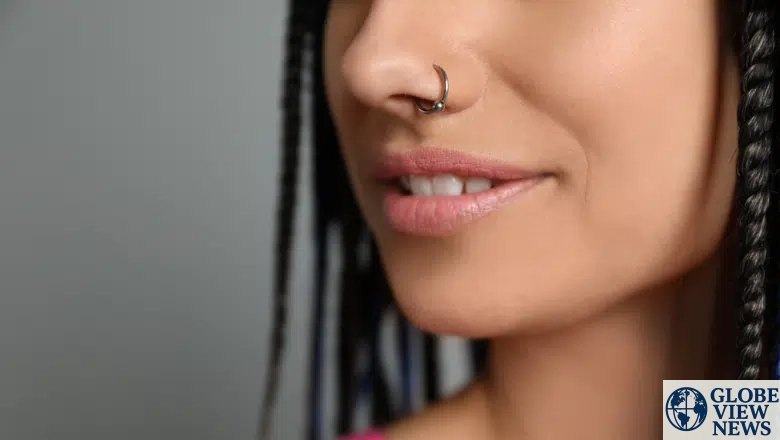Nose nose piercing has been an integral part of human adornment for centuries. From ancient tribes to modern celebrities, this single piercing carries multiple meanings – cultural, spiritual, rebellious, and purely aesthetic. Today, nose nose piercing is not merely a body modification trend; it is a representation of personal identity, heritage, and evolving fashion ideals.
The concept of nose nose piercing is deeply rooted in ancient traditions. In India, nose nose piercing is documented as early as the 16th century, popularised by the Mughal Empire. It was believed to be inspired by Middle Eastern practices, as nose nose piercing has been part of Bedouin and Berber cultures for thousands of years. In these societies, it often signified marital status, social ranking, or tribal belonging. For example, Bedouin women received nose nose piercing as bridal gifts, a practice that showcased wealth and family honour.
Beyond South Asia and the Middle East, nose nose piercing was common among Indigenous Australian and African communities. Some tribes used it to mark significant life stages or as a rite of passage. These piercings often involved septum piercings, using bones or wooden plugs to enhance appearance and project fierceness.
In the Western world, nose nose piercing emerged during the hippie movement of the 1960s and 70s when youth travelled to India and Nepal, returning with nose studs as souvenirs and counterculture statements. By the 1990s, the grunge and alternative scenes embraced nose nose piercing as a form of rebellion against conservative norms.
Today, nose piercing is embraced by diverse groups without the cultural stigma it once carried. From teenagers to corporate professionals, the nose stud or hoop has become a subtle yet powerful expression of individuality. Fashion icons like Rihanna, Zendaya, and Bella Hadid have normalised and glamorised nose piercing on global runways and red carpets.
Nostril Piercing: The most common type, usually placed on either side of the nostril. It can carry cultural meaning in South Asia, where the left nostril is traditionally preferred due to Ayurvedic beliefs linking it to reproductive health and reduced menstrual pain.
Septum Piercing: Piercing through the cartilage divider between nostrils. It is easily hidden with retainers, making it popular among those who require discretion for professional settings.
High Nostril Piercing: Placed higher up the nostril, offering a unique aesthetic often combined with traditional nostril studs for layered styling.
Bridge Piercing: Although not technically a nose piercing as it pierces the skin on the nasal bridge, it is included in contemporary nose piercing trends.
The procedure for nose piercing is quick but requires precision and hygiene to avoid complications. A professional piercer will first clean the area, mark the spot, and use a sterilised hollow needle to pierce. It is recommended to avoid piercing guns as they can cause tissue trauma and prolonged healing.
Aftercare includes:
Cleaning twice daily with saline solution or sterile wound wash.
Avoiding unnecessary touching to prevent bacterial contamination.
Not changing jewellery prematurely. Healing time for nostril piercings ranges from 2 to 4 months, while septum piercings heal in 1 to 3 months.
Complications such as infections, bumps, or keloids can occur if aftercare instructions are ignored. Nickel allergies should be considered when selecting jewellery to avoid dermatitis or rashes.
Jewellery enhances the aesthetic of nose piercing. Common options include:
Studs: L-shaped or screw-shaped studs with gemstones, diamonds, or minimalist metallic beads.
Hoops: Continuous rings or captive bead rings for a bold look.
Segment Rings and Clickers: Especially popular for septum piercings due to their decorative fronts and ease of use.
Gold (14k or higher), titanium, and surgical steel are recommended for initial piercings due to their hypoallergenic properties.
There has been debate on cultural appropriation surrounding nose piercing, particularly in Western fashion contexts. Some argue that adopting nose piercing without understanding its cultural roots, especially among South Asian or Middle Eastern communities, reduces a centuries-old tradition to a fleeting trend.
However, many also believe that cultural exchange is inevitable in globalised societies, and if nose piercing is worn respectfully with understanding of its origins, it serves as appreciation rather than appropriation. In South Asian weddings today, brides often wear elaborate naths (nose rings) connected to ear chains, a practice that remains sacred and beautiful.
Earlier, having a nose nose piercing in corporate environments was viewed as unprofessional or rebellious. However, contemporary workplaces are evolving to embrace diversity and personal expression. Many professionals now wear discreet nose studs that align with workplace dress codes. In industries like fashion, music, and creative arts, nose piercing is almost seen as an accessory enhancing one’s unique aesthetic.
Beyond cultural meanings, nose piercing often carries personal significance:
Empowerment: Many individuals choose piercing as a symbol of reclaiming bodily autonomy after traumatic experiences.
Milestones: People often commemorate milestones like graduations or overcoming struggles with piercings, marking new chapters.
Aesthetic Confidence: For many, a nose piercing enhances facial features, draws attention to the eyes, and builds confidence in personal appearance.
The popularity of nose piercing shows no signs of decline. With body modification becoming more accepted in society, it is likely that new piercing techniques and jewellery designs will continue emerging. 3D printed jewellery, bio-compatible smart piercings, and intricate goldwork are already entering luxury piercing studios.
Additionally, as sustainability becomes a central theme in fashion, brands are producing ethically sourced gold and conflict-free diamonds for nose piercing jewellery, catering to environmentally conscious consumers.
Nose nose piercing is more than a trend; it is a cultural artefact, a personal expression, and a timeless fashion statement. From ancient bridal traditions to modern-day runway shows, this piercing has travelled across centuries and continents, evolving in meaning and style.
Whether worn as a tribute to heritage, a mark of independence, or purely as a fashionable accessory, nose nose piercing remains one of the most loved and widely adopted forms of body adornment. Its enduring appeal lies in its ability to blend history with modernity, rebellion with tradition, and minimalism with luxury – making it a true testament to human creativity and self-expression.

